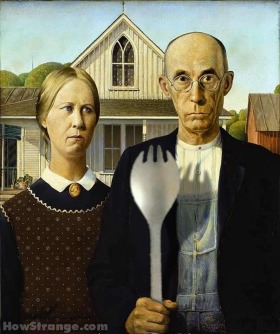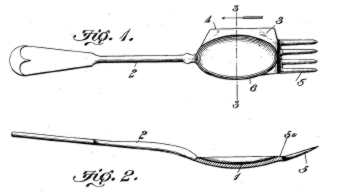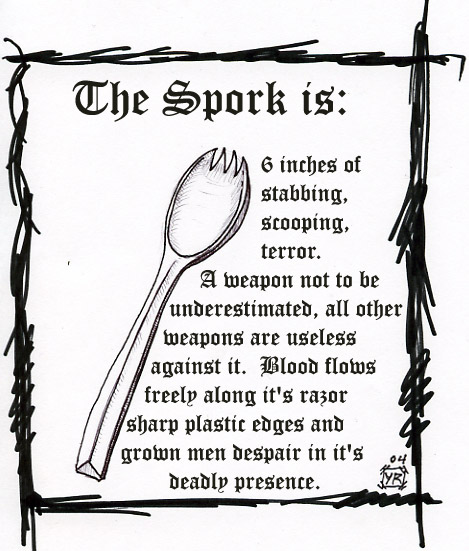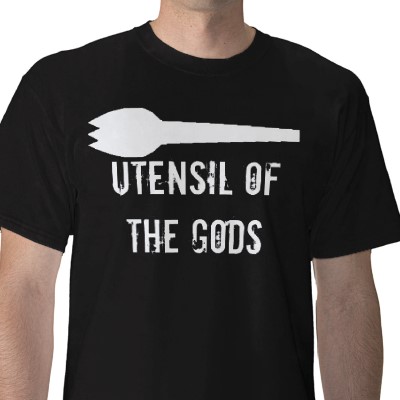
I often wonder why the spork isn’t a more utilized tool of eating. This hybrid utensil acts as a fork and a spoon, allowing you to not only stab and pick up your food, but shovel it as well. Last time I checked, the spork really wasn’t getting the respect it deserves. Because of this, I decided to pay a tribute to this seldom used utensil. Whether used as a marvelous eating utensil, a cult worship figure, or even decoration, the spork has brought joy to countless lives.

History of the Spork
- Sporks have been manufactured since the late 1800s. The word spork origiseveral years later.nated in the early 1900s to describe hybrid devices that were being developed to act as both a spoon and a fork.
- The first known spork was patented by George Laramy of Enfield, New Hampshire in 1907. He was a pioneer, and is now know as the pioneer and founder of the spork.
- According to a 1952 New York Times article, Hyde w. Ballard of Westtown Pennsylvania filed an application to register “Spork” as a trademark for a combination spoon and fork made of stainless steel. There is no record of this patent, however.
- The Van Brode Miling Company registered “Spork” for a combination plastic spoon, fork, and knife but abandoned the registration
Where you Can Still Find Sporks
- Various blessed school cafeterias
- Taco Bell
- Rally’s
- Kentucky Fried Chicken
- Popeye’s Fried Chicken
- Your Local 7-11 retail market
- QuickTrip Convenience Stores
- Chick-Filet’s
- Many Pre-Packaged Meals
- Hardee’s
- Lee’s Famous Recipie Chicken
- Kenny Rodgers Roasters
- Boston Market

Anatomy of the Spork
- Cranial Fossa – Large depression which spans the cranium. In native habitats, this area is used to hold food for transportation
- Rostral Processes – These projections extend from the cranium and act functionally as teeth, used to impale foods.
- Canines – Sharp, cranial projections also known as tines which are used to impale foods.
- Cranial Ridge – Ridge that makes up the lateral margins of the cranium
- Neck – The tapering, most anterior portion of the trunk.
- Dorsal Carina – Ridge that extends dorsally along the entire surface of the trunk.
- Platysmal surfaces – Flat surfaces on either side of the dorsal carina.
- Cercus – The posterior tip of the trunk.
How You Can Help Bring Sporks Back

Wear a spork shirt – http://www.zazzle.com/the_spork_shirt-235785667947487571
Stock your home with titanium sporks – http://www.thinkgeek.com/homeoffice/kitchen/8ace/
Spork bumper stickers – http://bumperstickers.cafepress.com/spork
